

DVB-T Receiver Reference Desig
IC应用电路图
505人已加入
描述
DVB-T Receiver Reference Design with the MAX3580
Abstract: The MAX3580 DVB-T reference design meets NorDig 1.0.3 and MBRAI requirements. This NIM design includes the MAX3580 direct-conversion tuner and a DVB-T demodulator/decoder. A discrete, active loop-through with low power consumption and low cost is included. Target applications include digital televisions, digital terrestrial set-tops, laptop televisions, automotive televisions, and USB peripherals. 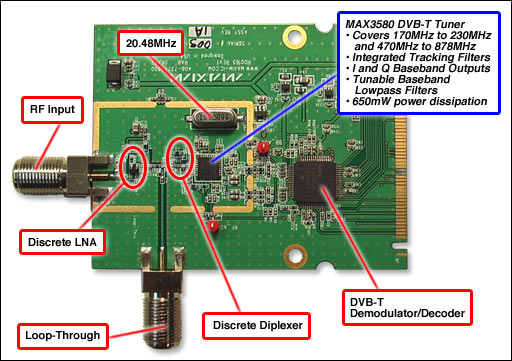
Figure 1. DVB-T receiver reference design features the MAX3580. 
Figure 2. System block diagram
| Lab Measurements |
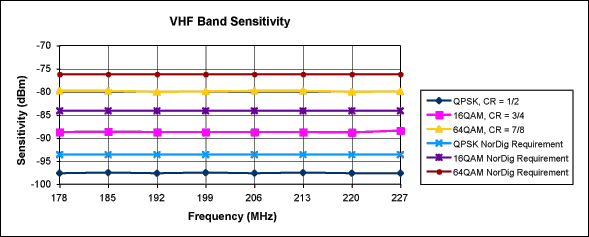
Figure 3. VHF sensitivity measures better than -97dBm for QPSK modulation with Code Rate 1/2.
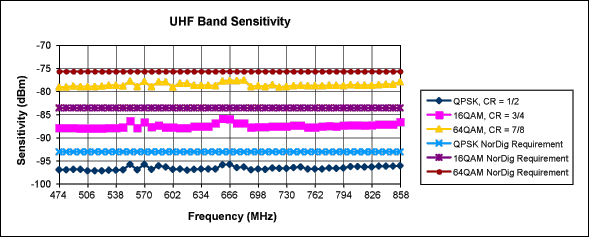
Figure 4. UHF sensitivity measures better than -96dBm for QPSK modulation and Code Rate 1/2
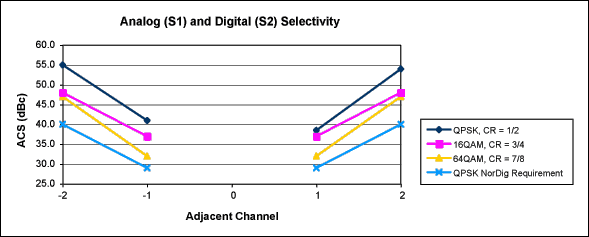
Figure 5. The adjacent channel selectivity (ACS) is better than 32dBc for N ±1 digital adjacents and better than 38.5dBc for N ±1 analog adjacents. These measurements show MBRAI compliance for category a/b1 requirements
| ||||||||||||||||||||||||||||||||||||||||||||||
| DVB-T Terrestrial Frequency Plan in Europe |
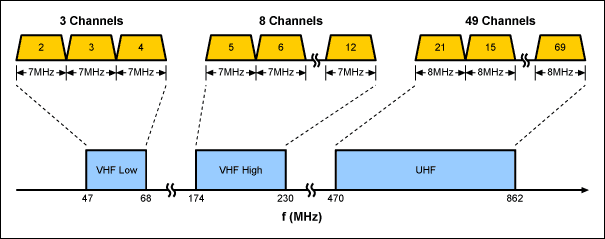
Figure 6. The DVB-T/PAL signal is broadcast in the VHF Low, VHF High, and UHF bands as shown above. Channel spacing is 7MHz in the VHF band and 8MHz in the UHF band.
| Detailed Description |
The MAX3580 fully integrated, direct-conversion TV tuner is designed for digital video broadcasting-terrestrial (DVB-T) applications. The integrated tuner covers a 170MHz to 230MHz input frequency range for the VHF-III band and 470MHz to 878MHz for the UHF band.
The MAX3580 integrates an RF input switch and a multiband tracking filter, allowing low-power tuner-on-board applications without the cost and power-dissipation issues of dual-conversion tuner solutions. The zero-IF architecture eliminates the need for SAW filters by providing baseband I and Q outputs directly to the demodulator. In addition, DC-offset cancellation is implemented on-chip using a mixed-signal architecture to improve the second-order distortion performance and the dynamic range of the downstream digitizer and demodulator.
The MAX3580 communicates using a 2-wire serial bus. The device typically operates from a +3.3V power supply, dissipating 650mV. The MAX3580 is available in a small 32-pin thin QFN package (5mm x 5mm) with an exposed paddle. Electrical performance is guaranteed over extended -40°C to +85°C temperature range.
声明:本文内容及配图由入驻作者撰写或者入驻合作网站授权转载。文章观点仅代表作者本人,不代表电子发烧友网立场。文章及其配图仅供工程师学习之用,如有内容侵权或者其他违规问题,请联系本站处理。
举报投诉
- 相关推荐
- 热点推荐
- DVB
-
DVB-T LCN问题2011-10-26 4844
-
MAX2136 ISDB-T/DVB-T低IF调谐器2010-02-21 1242
-
优惠供应DVB-T RECEIVER2009-08-18 4661
-
DVB-T学习资料2008-10-20 795
-
MAX3541 DVB-T/PAL Tuner2008-08-18 2630
-
DVB-T技术手册2008-08-05 1032
-
DVB-T产品知识培训考题2008-05-28 5353
-
dvb-t是什么意思2008-02-26 4680
全部0条评论

快来发表一下你的评论吧 !

